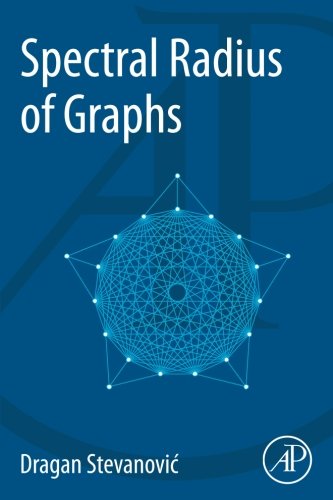

Most ebook files are in PDF format, so you can easily read them using various software such as Foxit Reader or directly on the Google Chrome browser.
Some ebook files are released by publishers in other formats such as .awz, .mobi, .epub, .fb2, etc. You may need to install specific software to read these formats on mobile/PC, such as Calibre.
Please read the tutorial at this link. https://ebooknice.com/page/post?id=faq
We offer FREE conversion to the popular formats you request; however, this may take some time. Therefore, right after payment, please email us, and we will try to provide the service as quickly as possible.
For some exceptional file formats or broken links (if any), please refrain from opening any disputes. Instead, email us first, and we will try to assist within a maximum of 6 hours.
EbookNice Team

Status:
Available4.7
30 reviewsSpectral Radius of Graphs provides a thorough overview of important results on the spectral radius of adjacency matrix of graphs that have appeared in the literature in the preceding ten years, most of them with proofs, and including some previously unpublished results of the author. The primer begins with a brief classical review, in order to provide the reader with a foundation for the subsequent chapters. Topics covered include spectral decomposition, the Perron-Frobenius theorem, the Rayleigh quotient, the Weyl inequalities, and the Interlacing theorem. From this introduction, the book delves deeper into the properties of the principal eigenvector; a critical subject as many of the results on the spectral radius of graphs rely on the properties of the principal eigenvector for their proofs. A following chapter surveys spectral radius of special graphs, covering multipartite graphs, non-regular graphs, planar graphs, threshold graphs, and others. Finally, the work explores results on the structure of graphs having extreme spectral radius in classes of graphs defined by fixing the value of a particular, integer-valued graph invariant, such as: the diameter, the radius, the domination number, the matching number, the clique number, the independence number, the chromatic number or the sequence of vertex degrees.
Throughout, the text includes the valuable addition of proofs to accompany the majority of presented results. This enables the reader to learn tricks of the trade and easily see if some of the techniques apply to a current research problem, without having to spend time on searching for the original articles. The book also contains a handful of open problems on the topic that might provide initiative for the readers research.
Overview of classical topics such as spectral decomposition, the Perron-Frobenius theorem, the Rayleigh quotient, the Weyl